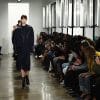The fashion industry has long been rightfully criticised for not accepting the bodies of its customers. Despite the average British woman wearing a size 16 (in America, she wears a size 20), high-end brands rarely have acknowledged that most women are unable to wear their clothes. But if recent events are anything to go by, we might be reaching a landmark moment in terms of inclusivity. And it’s about time.
The autumn/winter 2017 shows embraced size diversity more than ever before. This wouldn’t be hard – designer catwalks notoriously feature mainly teenage models with slight androgynous physiques – but it is worth noting. Michael Kors, Comme des Garcons, Dolce & Gabbana and H&M all celebrated more shapely forms in their shows, led by the increasingly popular Ashley Graham, Katy Syme and Stella Duval.
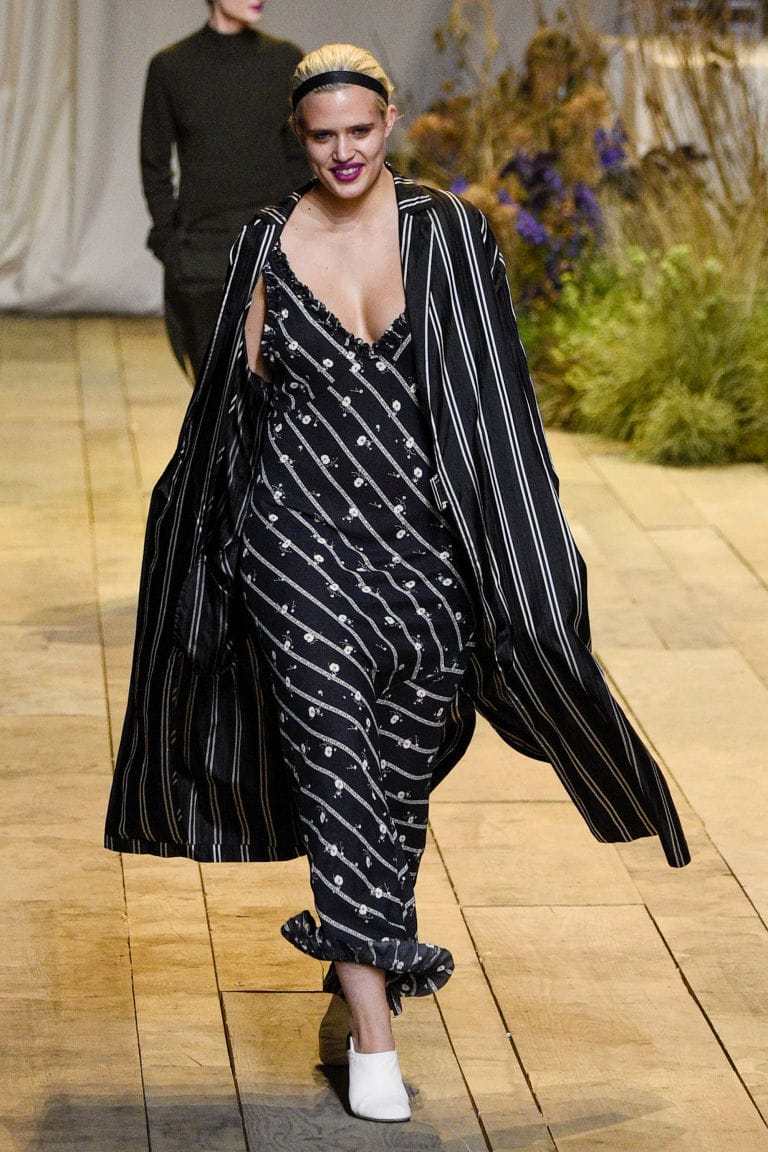
Stella Duval on the H&M catwalk © Getty Images
Prabal Gurung – who has previously offered his designs up to size 22 – has collaborated with the US plus-size label Lane Bryant on a collection of 22 pieces, modelled by the beautiful Candice Huffine. “What I wanted to do was have the platform that reaches a large audience and have the conversation,” he told Refinery29. “If I did it on my own I could have this conversation, but to have a bigger conversation I needed them.”
Victoria Beckham has also recognised that it’s a market that has a lot of potential. Her debut high-street offering with Target carries pieces up to XXXL. She also featured Candice Huffine in her lookbook, highlighting the importance of inclusivity. “I feel there’s something here for everybody, no matter her age, her size, where she’s from,” she told US Harper’s Bazaar. “For me it’s about being inclusive and that’s how Target feels as well.”
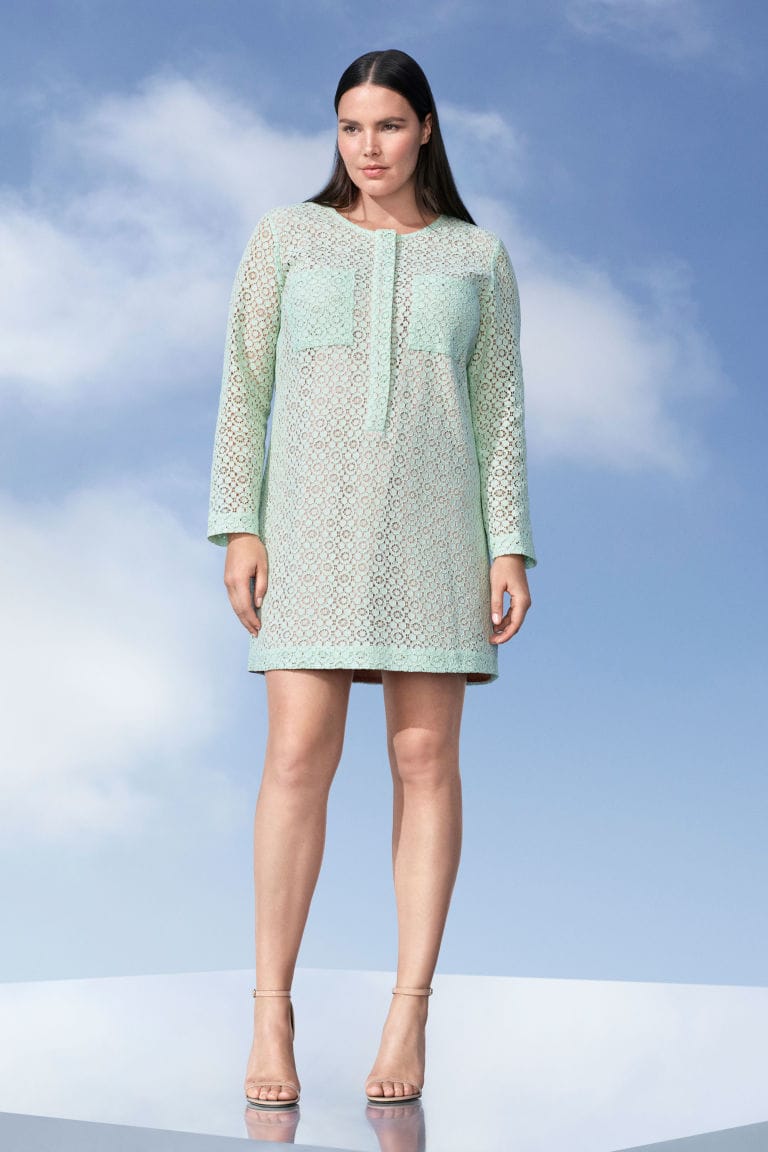
Candice Huffine modelling for Victoria Beckham
Last week, Selfridges announced it was stocking its first plus-size label in the form of Khloé Kardashian and Emma Grede’s denim brand Good American Jeans. The jeans are designed to “contour” curves, rather than limiting them.
“Whenever we bought new jeans, it was hard for us to find a pair that fit our body types, and even when we did, they’d always need alterations,” explained Kardashian. “We knew if we both had this problem, there must be tons of girls who did, too. So we set out to make a denim line that’s sexy and flattering, and made to fit you – not the other way round.”
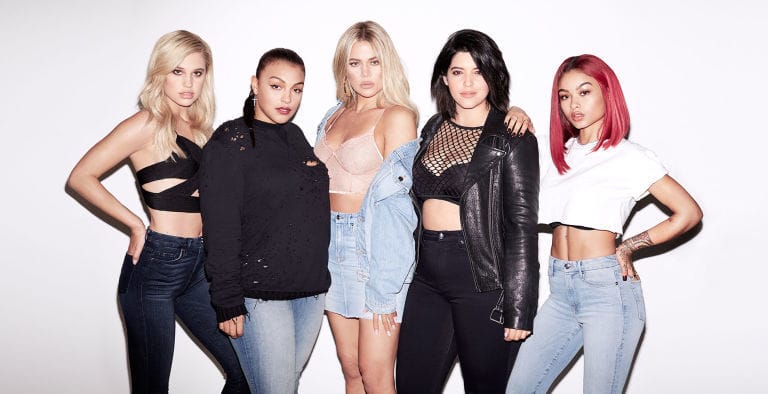
Good American Jeans
In the fitness market, brands have traditionally only catered for women who are already ‘slim’ in the traditional sense of the word, and only produce exercise apparel for small sizes. However, Nike launched a more inclusive offering last week with sizes going up to XXXL – featuring sports bras, running tights and hoodies. Lululemon and Adidas would be wise to follow suit.
Another brand celebrating diversity is Esse Vie, which launched in 2015 and has an interesting approach to design. Unlike other labels, the patterns for each piece starts at size 14, working back to a size six so that each item flatters all shapes. Collections created in the reverse methodology can be ill-fitting, with busts lacking support and sleeves being too tight.
“I believe that in today’s industry everything is designed towards sample sizes and then jumps to plus sizes,” said Sonam Vaswani, Esse Vie’s founder and creative director. “There are limited in-betweens for healthy girls with realistic body shapes. I found a niche in reversing the grading. Our focus is concealing ‘problematic’ areas whilst enhancing flattering parts of a woman’s body such as the waist or décolletage.”

Essie Vie
The reality is that the fashion industry would be short-sighted not to take stock of the now booming plus-size market. Last year, it made $21.4 billion, compared to $17.4 billion in 2013, according to the NPD Group. WWD also reports that plus-size teens are a key force in this, accounting for 34 per cent of the market in 2015 compared to 19 per cent in 2012. It’s a fact – plus size is the future.
Listening to the needs of its consumers is something luxury brands have started doing more often. The See Now Buy Now model, whereby collections become available immediately after a fashion show, was born of shoppers’ changing buying habits. We don’t want to wait six months to buy a piece when it’s already been shared all over social-media platforms. So the industry – Burberry, Michael Kors, Topshop and Ralph Lauren – have adapted their approach accordingly. So perhaps this is all part of the increasing democratisation of fashion.
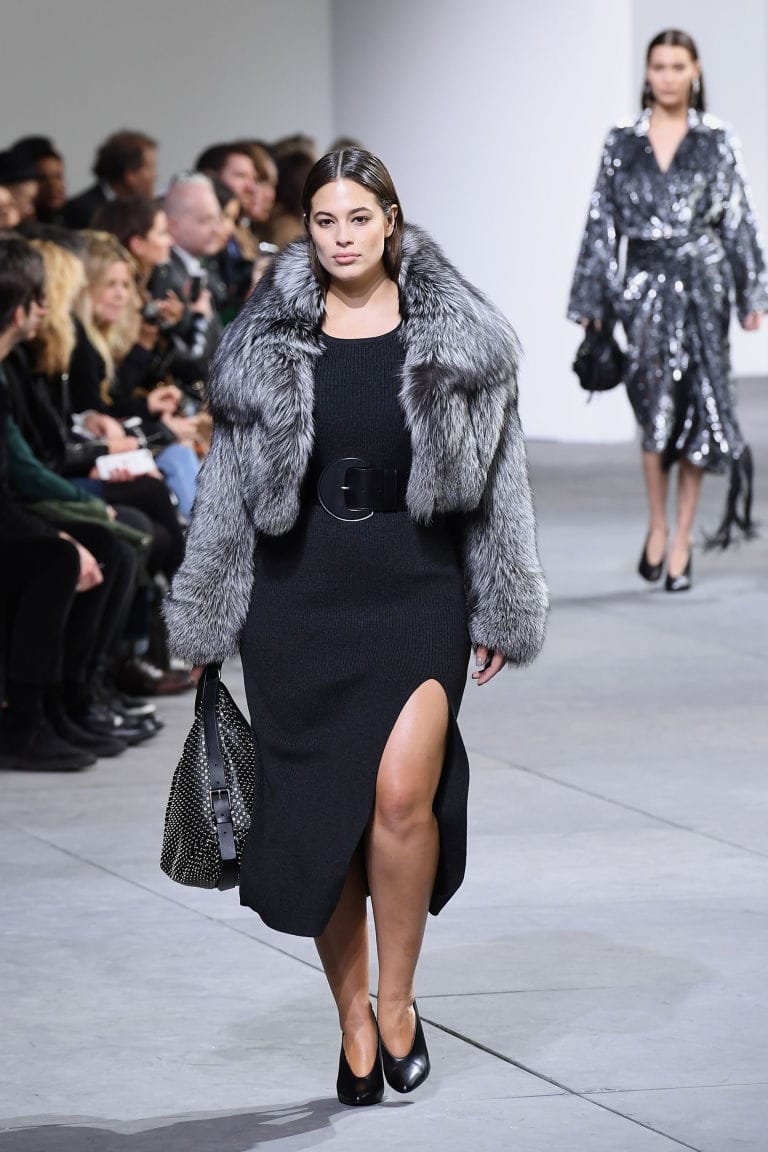
Ashley Graham on the Michael Kors catwalk © Getty Images
Women above a size 14 are looking at the same catwalk collections and shows as everyone else. There is no reason why they should get at best a diluted version, at worst be excluded entirely from a world that they want to buy into. Being a larger size does not mean that a woman doesn’t have the money or the inclination to invest in fashion, but attitudes are changing. It goes without saying that the industry should have acted sooner and that there’s still a way to go, but better late than never.
This article originally appeared on Harper’s BAZAAR UK



